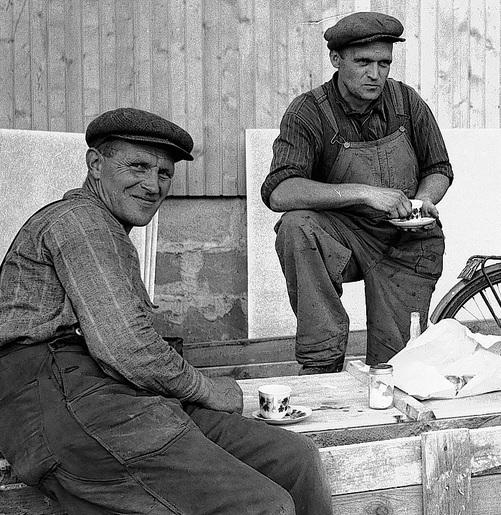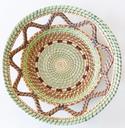An important part of a Thomistic metaphysics of creation is the idea of gift. All creatures, by the fact that none is the uncreated First Cause, are created ex nihilo. Created from nothing, they are not the source of their own existence; being does not flow forth from their essences. Thus, they receive this being as a gift from He Who Is. Standing before this momentous fact, the creature’s proper response is adoration and a return of the gift. Responding with gratitude to God’s gratuitous gift of life is the only way that man actually reaches happiness (cf. Gaudium et spes, 24). Lewis Hyde in The Gift: Creativity and the Artist in the Modern World makes the case that men are able to recognize and respond to gifts largely based on how their own society seeks unity through gift-giving. Hyde’s main concern is that in modern Western capitalism the notion of gift, which brings men into true communion, has been eroded due to the universalization of market commodities (and, thus, the diminishing of a society of gift). “The spirit of the market destroys…gift.”
Hyde spends the greater part of the text systematizing a philosophy of gift by means of anthropological studies of pre-capitalist societies that were largely gift-based: from the Pacific Islander community of the Massim who engage in the ceremonial Kula exchanges of practically useless but socially cohesive armbands, to the circulating copper plates of the North Pacific native American potlatches. The value of the gifts given was not as much in the items themselves as in the spirit of the community from which they came. With each new gifting, the reality of the community became stronger and greater, what Hyde calls the “increase” of the gift. Hyde even explains how the giving of daughters in marriage did not imply the idea of women as property (a concern which could only creep into the ceremonials after the widespread commodification of a market economy) but rather as gifts from the gods which, when given again and to another, increased their initial worth and created a true unity amongst families and tribes. The bride, then, is not an item of the marketplace but rather the center of what might be called a new substance constituted by the families which she joins. She is the gift which makes communion possible. As Hyde himself puts it as a kind of precursor to John Paul II, “As gifts are agents of relationship, so brides become relations, literally.”
The cohesive nature of gifts comes forth solely through the cycle of their being given and then given again. Hyde explains the cycle of gift in the following manner: (1) a gift is given; (2) the gift is given from the recipient to a new recipient; (3) the giving continues until the gift returns ultimately, in some manner, to its original donor. And yet, even here, the gift is not to rest but to be given again. Within this cycle, the gift gains value each time it is given so that when it finally returns to the original donor it comes having multiplied a hundredfold in worth. Simultaneously, the real value of the gift is its social value. The cycle “offers equilibrium and coherence, a kind of anarchist stability.” The cycle not only increases the gifts themselves but creates and, it might be said, necessarily constitutes the community itself. Indeed, Hyde comments that the very existence of the community, that which survives the death of a particular member within it, “may be lost…when there is wholesale destruction of its vehicles.” These vehicles, these gifts which are given, are merely what art is. And while Hyde does not give a direct definition of what art is, one can be reconstructed from his work: Art is a received mysterious understanding of our being as gift which is given to others to both express the community’s own understanding of itself and to constitute the community itself. Hyde comments that “a work of art can survive without the market, but where there is no gift there is no art.”
Commodities, on the other hand, are associated with freedom, in the sense of separation from the group by alienation. The “free world” is the one in which every self is “atomized” and, thus, able to do what he pleases. Yet, the price for such “freedom” is disassociation from the life of the community and unhappiness, given the fact that man is made for communion. In societies dominated by the marketplace, man suffers the fate of being “commodity incarnate: free as a bird and lonesome.” As Hyde explains: “In a group that derives its cohesion from a circulation of gifts the conversion of gifts to commodities will have the effect of fragmenting the group, or even destroying it.” Hyde’s profound chapter on usury nicely explains the fact that while brotherhood was created and protected by gift cycles, “otherhood,” or foreigners to the community, could be charged usury without wrongdoing. The ultimate concern is that, in a market economy, all become others or, as Hyde calls us, “cordial strangers.”
Hyde’s ultimate concern is the commoditization of art itself which ushers in the destruction of both art and a true community, which the giving of art creates. Art itself, according to Hyde, is a gift received by the artist. When Theodore Roethke was given the “gifted-state” and scrawled a masterpiece of poetry in less than an hour, sometimes after years of trying to “produce” one, he writes, “I walked around, and I wept; and I knelt down—I always do after I’ve written what I know is a good piece. But at the same time I had, as God is my witness, the actual sense of a Presence—as if Yeats himself were in that room.” Art is something that is received simultaneously from God and “the brotherhood,” that is, the community which is created by the art already gifted. Once received, according to the cycle of gift, the artist must give this gift to another. An oft-repeated mantra of Hyde’s is that “the gift must stay in motion.” It is this re-gifting of art to a third party that enables the self to enter into that “greater self” which is the true society of persons with whom one shares these mutual gifts. Hyde quotes Joseph Conrad explaining that it is in art that we can appeal to “our capacity for delight and wonder, to the sense of mystery surrounding our lives” and ultimately to a “fellowship with all creation—to the subtle but invincible conviction of solidarity that knits together the loneliness of innumerable hearts…which binds together all humanity—the dead to the living and the living to the unborn.” It is in art that the distinction between the self and the group, the biological and the spiritual, breaks down. “Art draws each of its participants into a wider self.” It is here that we are made one.
When art becomes mass-produced for consumption, however, it loses its unifying power. While the artist might be able to live off the means brought in by his works of art, the solidarity of man is stripped not only from the power of the art itself but from society altogether. The spirit of the community is nourished “by disbursing our gifts, not by capitalizing upon them.” The fruits of solidarity coming forth from the gift cycle, which is intrinsically linked with the reception and giving of art as the very voice of the community, the “wider self,” do not come to us “where we have converted our arts to pure commercial enterprises.”
Although Hyde’s lengthy chapters on Walt Whitman and Ezra Pound attempt to convey his philosophy in concrete situations, they are often much less enlightening and convoluted, linking poetic motifs to the artists’ lives. The chapters on “The Commerce of the Creative Spirit” and the ultimate conclusion, however, nicely bring the truths drawn from historic gift cycles, as well as from folk tales, to the modern realm and wrestle with the great question, “What now?” More specifically, the question concerning Hyde is “How, if art is essentially a gift, is the artist to survive in a society dominated by the market?” The underlying question, it seems, is more dire: How is society to survive by way of art when the market dominates? The question we must ask is that of the fulfillment of the human person in a community constituted by the gift of self. Such a community cannot survive, or even begin, if the persons who would make up that unity do not, themselves, understand what a gift is. Neither will they be able to come together to make this community in gift cycles when all is bought and sold. Love, that which merely is the gift of self, exists among brothers. If everyone, including my next door neighbor or, worse, my own siblings are treated as “others,” those subject to usury and marketing tactics, can we hope for society at all? Hyde finally concludes on a positive note indicating that he believes the dichotomy between the market and the gift cycle is not so irreconcilable. He explains that “within certain limits what has been given as a gift may be sold in the marketplace and what has been earned in the marketplace may be given as a gift.” As Hyde himself indicates, it is the definition of these “certain limits” which can make or break a unity among men. Certainly, “there is a degree of commercialization which destroys the community itself.” But the middle ground, “in which, sometimes, eros and logos coexist” must be discerned to ensure the existence and health of true human society. In a modern liberal capitalist economy like that of our own modern West, this task is, in many ways, at the heart of the New Evangelization. Without a resolution, man will be unfulfilled because the gift of God Himself in Christ will be excluded.
Jeremy Sienkiewicz, husband and father of five, is Assistant Professor of Theology and Evangelization at Benedictine College in Atchison, Kansas.
Keep reading! Click here to read our next article, The Injustice of Family Breakdown.
Jeremy Sienkiewicz, husband and father of five, is Assistant Professor of Theology and Evangelization at Benedictine College in Atchison, Kansas.



